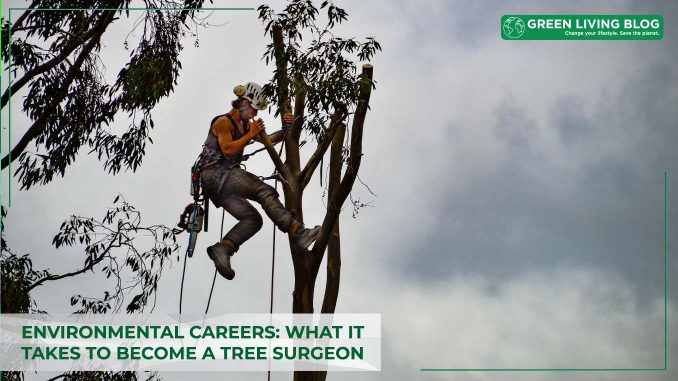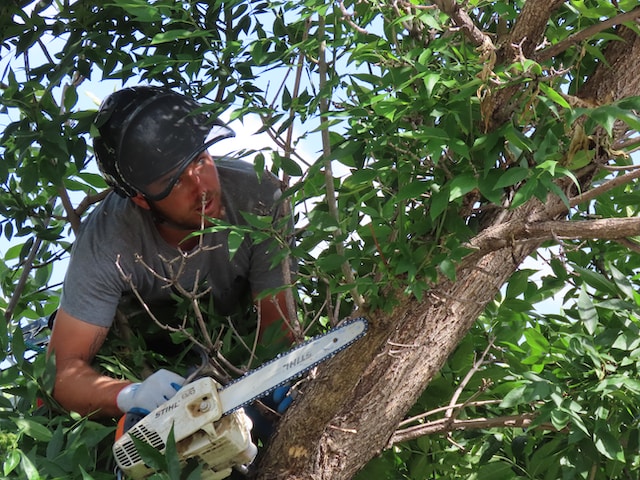
There’s a lot to like about tree surgery as a profession. It will give you a chance to be physically active, outdoors.
You’ll be able to do creative problem-solving throughout your working day. You’ll have a skill that will always be in demand, thanks to the tendency of trees to grow constantly.
Since no two trees are the same, you’ll have plenty of variety built into this green job. Plus, you’ll be surrounded by beautiful greenery for most of your time, inhaling fresh air.
Let’s take a closer look at this forgotten profession, what it involves, and how to get yourself into it.
What exactly is a Tree Surgeon?
A tree surgeon is a professional whose job it is to cut trees into shape – or to remove them entirely. They might use a range of dangerous tools, like chainsaws, and work at heights, too. If you’re working as a tree surgeon, you not only need to have the appropriate tools but the ability to use them safely.
Of course, among the more important pieces of equipment you’ll be using are items of protective clothing, like heavy-duty gloves and eye protection. A tree is a natural object, and therefore an unpredictable one. If you cut into a branch at a certain angle, you might have splinters flying in every direction – including towards your face.
Naturally, tree surgery also involves working in close proximity to loud motors, which means that ear protection is often warranted, too.

The difference between a Tree Surgeon and an Arborist
The term ‘arborist’ describes a similar sort of professional. But while a tree surgeon might have a practical understanding of how to effectively slice trees into pieces, an arborist will have a deeper knowledge of the underlying biology.
In other words, they’ll work much like a doctor would – except instead of analysing and preserving the health of a human patient, they’ll be doing the same thing to a tree!
Do you need any Qualifications?

To advertise your services as a tree surgeon, you don’t need any special skills or qualifications. To work as a recognised arborist, on the other hand, requires either a degree or a National Certificate in Arboriculture. Without the right qualification, you won’t be able to secure membership in the AA.
You’ll build your skillset on a strong grasp of maths. This doesn’t mean that you have to be able to do advanced calculus or even algebra – but if you’re comfortable with countdown-level arithmetic, then you’ll have an easier time dealing with lengths and prices. A vague understanding of photosynthesis and how plants work can also be valuable.
Closing Thoughts
If you’re serious about entering the arborist or tree surgeon profession, then it is probably a good idea to get in touch with a local tree surgeon or arborist association and display an interest. You could also start a green blog about trees and the work you would do as a tree surgeon to gain more customers and create more awareness about this profession.
![]()
Author Profile
- Online Media & PR Strategist
- Blogger and Educator by Passion | Senior Online Media & PR Strategist at ClickDo Ltd. | Fascinated to Write Lifestyle Blogs in News & Education I have completed a journalism summer course at the London School of Journalism and manage various blogs.
Latest entries
 LeisureApril 16, 202510 Best Green UK Hotels for Eco-Tourists
LeisureApril 16, 202510 Best Green UK Hotels for Eco-Tourists Best practicesApril 14, 20258 Best Ways to Reduce Your Carbon Footprint
Best practicesApril 14, 20258 Best Ways to Reduce Your Carbon Footprint Green Expert GuidesMarch 28, 2025Lisbon Living: Where Sustainable Charm Meets Urban Energy
Green Expert GuidesMarch 28, 2025Lisbon Living: Where Sustainable Charm Meets Urban Energy EnvironmentJanuary 21, 2025Buying Eco-Friendly Homes: 6 Eco Questions to Ask Your Real Estate Agent
EnvironmentJanuary 21, 2025Buying Eco-Friendly Homes: 6 Eco Questions to Ask Your Real Estate Agent






Leave a Reply
You must be logged in to post a comment.